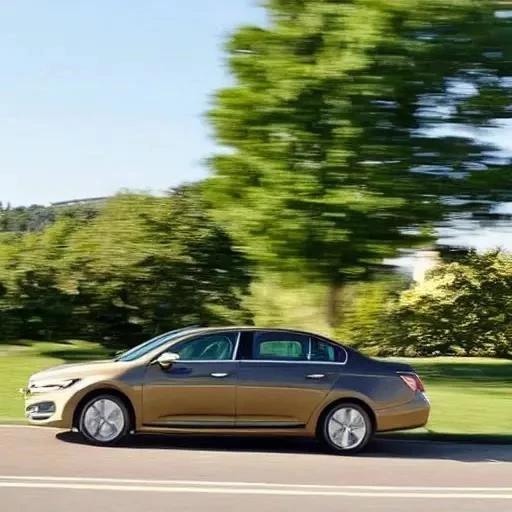
Driving, for many, represents freedom, independence, and the thrilling promise of the open road. Yet, beneath this exhilarating veneer lies a crucial, often overlooked, layer of responsibility: the absolute necessity of valid vehicle insurance cover. It’s not merely a bureaucratic checkbox; it’s an invisible shield, an essential safeguard protecting not just your substantial investment but also your future and the well-being of others.
Understanding precisely when this vital protection is mandated isn’t just about avoiding penalties; it’s about embracing profound peace of mind in an unpredictable world, fostering a collective culture of accountability on our shared roadways. The landscape of automotive ownership is undeniably complex, woven with legal intricacies that vary significantly across jurisdictions, yet a universal truth prevails: the moment your vehicle touches a public thoroughfare, its legal status shifts dramatically.
This immediate transformation from a private asset to a publicly operating machine triggers a profound obligation to possess comprehensive coverage, a requirement meticulously designed to mitigate the inherent risks associated with modern transit. Ignorance, regrettably, offers no legal reprieve; being caught without appropriate documentation can precipitate a cascade of severe repercussions, ranging from substantial fines and points on your license to the immediate impoundment of your cherished vehicle, even potential incarceration in extreme scenarios. Consequently, ensuring your vehicle is perpetually covered isn’t just a recommendation; it’s a foundational pillar of responsible vehicle stewardship, underpinning the entire ecosystem of road safety and financial security for every participant.
| Key Scenario for Insurance | Insurance Requirement Status | Important Note / Type of Cover |
|---|---|---|
| Driving on Public Roads | Mandatory Legal Minimum | Covers damage/injury to others. Essential for all active drivers. |
| Vehicle Ownership/Registration | Often a Prerequisite | Ensures continuous cover even if not driven daily in many regions. |
| Purchasing a New/Used Vehicle | Required Before Driving Off Lot | Arrange cover in advance to avoid legal gaps immediately post-purchase. |
| Leasing or Financing a Vehicle | Comprehensive Coverage Stipulated | Lenders/lessors demand protection for their asset against various risks. |
| Vehicle Parked on Public Land | May Still Require Valid Insurance | Check “Statutory Off Road Notification” (SORN) rules if not driving and stored privately. |
| Reference: Insurance Information Institute (III) — Auto Insurance Basics | ||
The Unseen Mandate: From Purchase to Parking
Industry experts consistently underscore that the requirement for insurance typically commences the instant you take possession of a vehicle, whether it’s driving it off the dealership lot or completing a private sale. Dr. Evelyn Reed, a renowned automotive legal analyst, emphatically states, “Delaying insurance activation, even for a single day, exposes you to immense, potentially life-altering financial liabilities should an unforeseen incident occur. It’s a gamble simply not worth taking.”
Beyond the initial acquisition, the continuous nature of this mandate is frequently misunderstood. Many assume that if a vehicle is temporarily garaged or not actively driven, the insurance obligation ceases. This common misconception can lead to dire consequences. In numerous regions, maintaining valid insurance is inextricably linked to the vehicle’s registration status. A lapse in coverage can automatically trigger a notification to relevant authorities, leading to penalties even when the vehicle is stationary. This proactive monitoring, increasingly facilitated by advanced AI-driven systems, ensures minimal loopholes for non-compliance.
Consider the UK’s ‘Continuous Insurance Enforcement’ (CIE) system, a pioneering initiative demonstrating how authorities are leveraging technology to ensure nearly every registered vehicle is insured unless formally declared ‘off-road’ via a Statutory Off Road Notification (SORN). This remarkable system serves as a powerful testament to the global push for universal coverage. Furthermore, for those engaging in vehicle financing or leasing, the terms of agreement almost invariably stipulate comprehensive coverage, safeguarding the lender’s asset against a plethora of risks, from accidental damage to outright theft. Failing to uphold these contractual obligations can result in repossession and significant financial penalties.
Beyond Compliance: The True Value of Your Policy
However, the true value of vehicle insurance transcends mere legal adherence. It’s a remarkably effective financial instrument, meticulously designed to absorb the shock of unexpected events. Imagine the devastating financial burden following a collision where you are at fault, causing extensive damage to another party’s property or, worse, severe personal injuries. Without robust coverage, your personal assets – your savings, your home, your future earnings – could be catastrophically exposed, potentially for decades.
Moreover, modern policies often extend far beyond basic liability, offering crucial protection against theft, vandalism, natural disasters like floods or hail, and even encounters with uninsured motorists. This holistic approach transforms insurance from a grudging requirement into a comprehensive safety net, providing unparalleled tranquility and mitigating the profound anxieties that often accompany vehicle ownership. By integrating insights from evolving risk landscapes and customer needs, insurers are continuously refining these offerings, ensuring they remain relevant and incredibly effective.
Embracing a Secure Automotive Future
Looking ahead, the evolution of vehicle insurance, driven by data analytics and personalized risk assessment, promises even more tailored and equitable solutions. Telematics devices, for instance, are revolutionizing premiums by rewarding safer driving habits, fostering a symbiotic relationship between insurer and policyholder. This forward-thinking approach not only encourages responsible driving but also makes insurance more accessible and fair, reflecting individual behavior rather than broad statistical categories.
Ultimately, the question of ‘when’ your vehicle must have valid insurance cover is answered with resounding clarity: virtually always. From the precise moment of acquisition to its final journey, maintaining active coverage is an unwavering responsibility, a testament to prudent planning, and an indispensable component of safe, secure, and responsible driving. Embrace this essential protection not as an obligatory burden, but as an empowering choice – one that secures your personal journey and contributes profoundly to the safety and stability of our roads for everyone.
